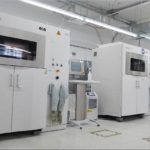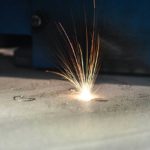Blog / Software
Read on to find out about:
Nylon 12 is one of the most popular materials available through OTTO 3D printing services. Although many customers request to 3D print with Nylon 12 repeatedly due to continued success in manufacturing industrial parts, it is critical to understand when use of Nylon 12 with Selective Laser Sintering (SLS) technology is suitable to ensure printability and a quality product.
Nylon 12 3D Printing Basics
Derived from the same plastics as other materials like Nylon 11, Nylon 12 has continued to be popular in traditional manufacturing like injection molding due to its strength and versatility. Now formulated for 3D printing too through several different processes, the same popular features are carried over for rapid prototyping and manufacturing of high-performance parts. For 3D printing, Nylon 12 material properties include:
High ductility is also one of the most appealing features of Nylon 12 as it is flexible for thinner structures, and rigid for thicker parts–making it appealing to OTTO customers for functional prototypes and end-use parts that are moving or interlocking.
While OTTO customers may choose to use Nylon 12 with SLS technology for a number of projects over time, this multifaceted 3D printing material may be used initially for multiple iterations in refining and testing a design. Some product development may require very little prototyping, while others need more extensive time and attention. Because Nylon 12 offers so many benefits as a resource, however, it may be the best choice for high functioning, end parts too, within the same project.
Understanding Selective Laser Sintering Technology
Selective Laser Sintering (SLS) is one of the most popular methods for printing Nylon 12, and is also known as one of the oldest methods of 3D printing, operating as a subcategory of powder-bed fusion. The SLS 3D printing process begins as thin layers of polymer powder are dispersed over the print bed. A laser then traces the 3D design onto each layer of powder, fusing them together just under the melting point until the desired structure is complete.
Nylon 12 SLS 3D printing processes are a well-suited pair, chosen by a wide range of designers and engineers due to powerful versatility, but also because of the incredibly valuable design freedom allowed. Because SLS 3D printing technology is powder-based, supports are not required. This is beneficial in two ways: much greater latitude is afforded in the design process without having to worry about the intricacies of support structures, and there is also not the added chance for damage to a finished part as supports are being removed in post-processing.
OTTO customers rely on these materials and technology for 3D printing on both the small and large scale; in fact, because parts can be strategically placed together in one build, there may be hundreds or even thousands of parts printed at once. Unused powder not only preserves the integrity of the 3D printed parts during manufacturing, but can be recycled easily, allowing for better sustainability and decreasing the environmental impact.
3D Printing Applications with Nylon 12
The potential for innovation via OTTO 3D printing is boundless, but especially in combination with SLS 3D printing with Nylon 12. With the ability to prototype and 3D print end-use parts–whether one or both–Nylon 12 can be used for projects on any nearly any scale in architecture, consumer goods, and even fine jewelry.
This material is also used for a variety of other applications, to include:
With the ability to design freely and expand on the multi-faceted features of Nylon 12 SLS, OTTO customers are continually coming up with new ways to use this material, along with choosing from several different finishes; however, it is imperative to understand the design guidelines for any 3D printing material, along with learning about the accompanying 3D printing technology.
Nylon 12 Colors and Finishes
Find out more about the bounding box requirements depending on finish, and design guidelines for Nylon 12 here.
About OTTO
OTTO enables manufacturers to outsource 3D printing to their customers without any capital expenditure. The manufacturing enterprise software is easily integrated, simplifying production of 3D printed parts in any volume with a wide variety of suitable materials and technologies--meeting the most advanced standards for any manufacturing enterprise.



Share:
We use cookies to offer you a better browsing experience, including personalized advertising. By continuing to use the site you agree to their use.
Learn more